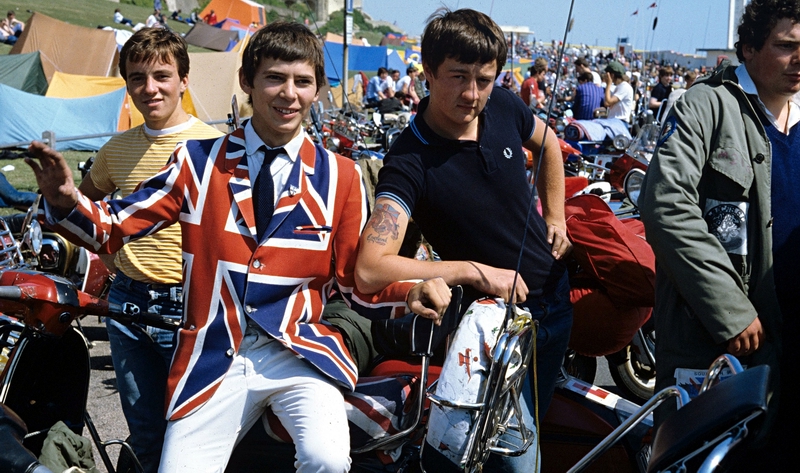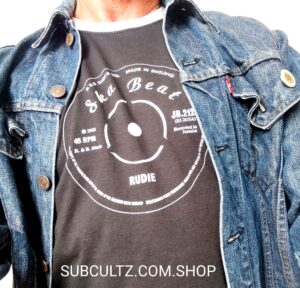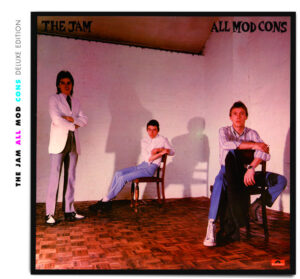
MOD REVIVAL

SHARE
Summer 1978 – England: Two years on, punk has exploded from its roots in grubby Sex Pistols gigs to shock exposés, hit singles, high street fashion and cartoon punks like Sham 69. It has lost its bite.
The Jam, part of punk’s first wave, also appeared to have lost their edge, but as the year wears on, they emerge with an album that is swiftly proclaimed as one of the decades finest.

The LP launches The Jam on a journey which makes them the UK’s most adored pop group.
The album was of course, All Mod Cons, which was smothered in the iconography of the 60’s cult which had so impacted on the young Paul Weller (pictured below right) three years earlier.

Soon a clutch of The Jam’s most loyal fans took to copying the band’s Mod dress sense; suits, button-down collared shirts, Fred Perry’s and short, neat hairstyles (such as the French Crew).

By coincidence, probably the most influential Mod band from the original 60’s scene were in the process of making a film about the original teenage experience – based in their West London haunt of Shepherds Bush – through the eyes of a Mod.
The Who‘s Quadrophenia accurately re-enacted the spirit of Mod London and Brighton for a generation too young to remember.
News filters out, nostalgic epitaphs to Mod are published and by the time the film is launched a year later, that army of Jam fans grows into what will soon be labelled the Mod Revival . . .
Summer 1979 : The Sounds music paper has led the way in documenting a fresh clutch of bands dressing as Mods. Most of them are based around London/Essex with a sound that mixes The Jam’s new wave energy with 60’s melodies and choice Motown/Who/Small Faces cover versions.
One of their main haunts is a rough and ready pub in Canning Town, East London, called the Bridge House, which funds a live album taped on May 1st – Mods Mayday ’79. The album includes tracks by Secret Affair, Squire, Small Hours, The Mods and Beggar. It is the first gathering of the tribes outside a Jam gig.
Meanwhile, Paul Weller stumbles across another regular haunt, the Duke Of Wellington at London Bridge, where he spots The Chords from South London – and invites them – and a leading Mod band from Essex, Romford’s Purple Hearts – to support The Jam on tour.
By August, most of the revival’s leading players have been signed up. Ian Page is seen on BBC1’s Nationwide as the scene’s self-proclaimed spokesman while his band, Secret Affair are given their own label (along with Squire) called I-Spy, by Arista Records. Both had already supported The Jam.
The Jam’s former producer, Chris Parry, adds The Purple Hearts and Back To Zero to his Fiction roster of The Chords and the R&B fuelled Long Tall Shorty. The Chords link up with Polydor and Long Tall Shorty to Warners. By Autumn the Mod revival is in full swing.

The Merton Parkas break into the mainstream Top 40 (just) with You Need Wheels, followed by Secret Affair with the ultimate Mod revival anthem, Time For Action (followed by the Motown-styled Let Your Heart Dance, and the more serious My World).
The Purple Hearts and The Chords enjoy a string of minor hits while The Lambrettas (pictured at left), from Lewes, West Sussex, debut with the excellent Go Steady, before cracking the Top 10 with an old R&B favourite, The Coasters‘ Poison Ivy.
Fuelled by this and Quadrophenia – and running parallel to the Midlands’ 2 Tone Ska Revival – Mod filtered out of London right across the South and the Midlands, and, to a lesser extent, the North.
The revival would ultimately spread to include much of Europe, Australia and even (albeit to a lesser degree) to parts of the USA.
